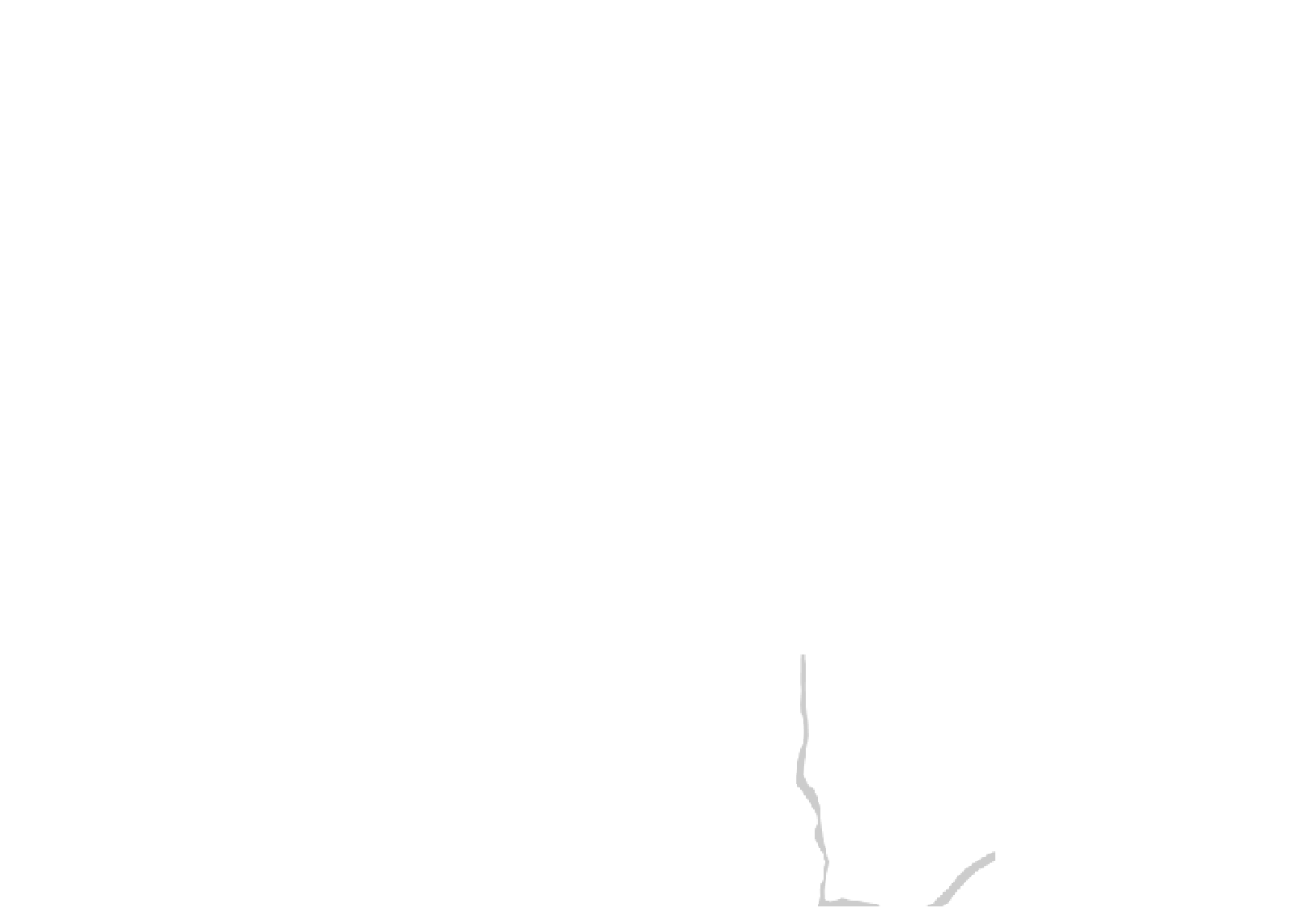Travel Reference
In-Depth Information
a floating weft technique) and
prada
(the ap-
plication of gold leaf or gold or silver thread
in traditional Balinese clothes).
Museum staff often play music on a bam-
boo gamelan to magical effect.
From mid-June to mid-July, the centre
hosts the Bali Arts Festival (see p170), with
dances, music and craft displays from all over
Bali. You may need to book tickets at the
centre for more popular events.
WALKING TOUR
This walk includes most of the attractions
in the middle of town and a few vestiges of
when Denpasar - and Bali - was a much
slower place. Allow extra time for visiting the
museum or shopping.
Start the walk at
Museum Negeri Propinsi Bali
(
1
; p168). Opposite is
Puputan Sq
(
2
), a park that
commemorates the heroic but suicidal stand
of the rajahs of Badung against the invading
Dutch in 1906. A monument depicts a Balinese
family in heroic pose, brandishing the weap-
ons that were so ineffective against the Dutch
guns. The woman also has jewels in her left
hand, as the women of the Badung court reput-
edly flung their jewellery at the Dutch soldiers
to taunt them. The park is popular with locals
at lunch time and with families near sunset.
Back on the corner of Jl Surapati and Jl
Veteran is the towering
Catur Muka statue
(
3
),
which represents Batara Guru, Lord of the
Four Directions. The four-faced, eight-armed
figure keeps a close eye (or is it eight eyes?) on
the traffic swirling around him. Head 100m
north on Jl Veteran to the
Inna Bali
(
4;
Jl Veteran
3;
p170). It dates from 1927 and was once the
main tourist hotel on the island. It makes a
nostalgic place for a refreshment.
Return to the Catur Muka statue and head
west on Jl Gajah Mada (named after the 14th-
century Majapahit prime minister). Go past
banks, shops and a café towards the bridge
over the grubby Sungai Badung (Badung
River). Just before the bridge, on the left, is
the renovated
Pasar Badung
(
5; p171
), the main
produce market. This is one of the better
places to see the fertile fruit of Bali. On the left,
just after the bridge,
Pasar Kumbasari
(
6; p171
) is
a handicraft and textiles market.
At the next main intersection, detour north
up Jl Sutomo, and turn left along a small
gang
(lane) leading to the
Pura Maospahit
(
7
) temple.
Established in the 14th century, at the time the
Majapahit arrived from Java, the temple was
damaged in a 1917 earthquake and has been
heavily restored since. The oldest structures
are at the back of the temple, but the most
interesting features are the large statues of
Garuda and the giant Batara Bayu.
Turn back, and continue south along Jl
Thamrin, to the junction of Jl Hasanudin.
On this corner is the
Puri Pemecutan
(
8
), a
palace destroyed during the 1906 invasion.
It's now long since been rebuilt and you can
look inside the compound but don't expect
anything palatial.
Go east on Jl Hasanudin, then north onto Jl
Sulawesi, and you'll be in the area of the gold
shops, known as Kampung Arab for the many
people there of Middle Eastern or Indian
descent. Continue north past Pasar Badung
market to return to Jl Gajah Mada.
AC TIVITIES
Many Balinese wouldn't think of having a
massage from anyone but a blind person.
Government-sponsored schools offer lengthy
courses to certify blind people in reflexology,
shiatsu massage, anatomy and much more.
Usually graduates work together in group
locations such as
Kube Dharma Bakti
(
Sanur), but also has some information about the rest of
Bali. It's not worth a special trip, but does offer the useful
Calendar of Events
booklet.
Ubung Tourist office
(Map pp166-7 ;
8am-2pm
Mon-Thu, 8am-noon Fri) This helpful office is located at the
Ubung Bus and Bemo Terminal and offers transport advice.
SIGHTS
Museum Negeri Propinsi Bali
This
museum
(Map pp166-7 ;
h
Pura Jagatnatha
Next to the museum, the
state
temple
(Map
pp166-7) is dedicated to the supreme god,
Sanghyang Widi. Built in 1953, part of its
significance is its statement of monotheism.
Although Balinese recognise many gods, the
belief in one supreme god (who can have
many manifestations) brings Balinese Hindu-
ism into conformity with the first principle of
Pancasila - the 'Belief in One God'.
The
padmasana
(shrine) is made of white
coral, and consists of an empty throne (sym-
bolic of heaven) on top of the cosmic turtle
and two
naga
(mythological serpents), which
symbolise the foundation of the world. The
walls are decorated with carvings of scenes
from the
Ramayana
and
Mahabharata
.
Pura Jagatnatha is more frequently used
than any other Balinese temple - local peo-
ple come every afternoon to pray and make
offerings - so it can often be closed to the public.
Two major festivals are held here every month,
during the full moon and new moon, and fea-
ture
wayang kulit
(shadow puppet plays). Ask at
the Denpasar Tourist Office for exact details, or
refer to its
Calendar of Events
booklet.
222680; adult/child
%
8am-12.30pm Mon-Fri, 8am-3pm Sun)
was originally established in 1910 by a Dutch
resident who was concerned by the export of
culturally significant artefacts from the island.
Destroyed in a 1917 earthquake, it was rebuilt
in the 1920s, but used mainly for storage until
1932. At that time, German artist Walter Spies
and some Dutch officials revived the idea of col-
lecting and preserving Balinese antiquities and
cultural objects, and creating an ethnographic
museum. Today the museum is well organised
and most displays are labelled in English. You
can climb one of the towers inside the grounds
for a better view of the whole complex.
The museum comprises several buildings
and pavilions, including examples of the archi-
tecture of both the
puri (
palace) and
pura (
tem-
ple)
,
with features such as a
candi bentar (
split
gateway) and a
kulkul (
warning drum) tower.
The main building, to the back as you enter,
has a collection of prehistoric pieces down-
stairs, including stone sarcophagi, and stone
and bronze implements. Upstairs are examples
of traditional artefacts, including items still in
everyday use. Look for the fine wood-and-cane
carrying cases for transporting fighting cocks,
and tiny carrying cases for fighting crickets.
The
northern pavilion
, in the style of a Taba-
nan palace, houses dance costumes and masks,
including a sinister Rangda
(widow-witch), a
healthy-looking Barong (mythical lion-dog
creature) and a towering Barong Landung
(tall Barong) figure. See the Glossary (p380)
for more about these mythical figures.
The
central pavilion
, with its spacious ver-
anda, is like the palace pavilions of the Karan-
gasem kingdom (based in Amlapura), where
rajahs held audiences. The exhibits are related
to Balinese religion, and include ceremonial
objects, calendars and priests' clothing.
The
southern pavilion
(Gedung Buleleng)
2000/1000Rp;
h
WALK FACTS
Start
Denpasar Tourist Office
Finish
Tiara Dewata Shopping Centre
Distance
2km
Duration
2-3hr
Bajra Sandhi Monument
Otherwise known as the Monument to the
Struggle of the People of Bali, this huge
monu-
ment
(Map pp166-7 ;
264517; Jl Raya Puputan; admission
%
9am-4.30pm)
is as big as its name and
dominates what's already a big park in Renon.
Inside this vaguely Borobodur-like structure
are dioramas tracing Bali's history. Taking the
name as a cue, you won't be surprised that they
have a certain jingoistic soap-opera quality.
But they're a fun diversion. Note that in the
portrayal of the 1906 battle with the Dutch, the
King of Badung is literally a sitting target.
2000Rp;
h
7
4
3
6
5
Kampung
Arab
2
8
1
Taman Wedhi Budaya
This
arts centre
(Map pp166-7 ;
222776; admission free;
%
8am-3pm Mon-Thu, 8am-1pm Fri-Sun)
is a sprawl-
ing complex in the eastern part of Denpasar.
Established in 1973 as an academy and show-
749 9440;
h
%
9am-9pm)
.
Jl Serma Mendara 3; massage per hr 30,000Rp;
h
















































































































































































